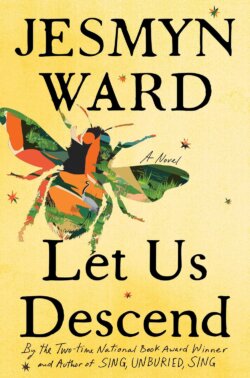
February 6, 2024
Two thrilling new takes on noir
Grab your trenchcoat and a stiff drink—you’ll need it.
Suppose, just for a moment, that the European colonizers of America hadn’t brought a whole host of diseases that wiped out a majority of the Indigenous population, and that Natives had thrived, rather than been decimated. What would Prohibition-era America have looked like, politically, economically and culturally?
In the alt-universe police procedural mystery Cahokia Jazz, Francis Spufford takes this premise and runs with it. It’s as if Philip K. Dick’s The Man in the High Castle met up with Tony Hillerman’s Skinwalkers in a 1922 speakeasy.
Apart from the setting—the state of Cahokia, carved out of eastern Missouri and surrounding states—the story starts off in familiar, if somewhat gruesome, territory. Two detectives, Joe Barrow and Phineas Drummond, are investigating a murder in which the victim has had his heart cut out. On his face, the word bashli (from Anopa, the city’s Native lingua franca, meaning hit or cut) has been scrawled in blood.
At first, the murder seems to have possibly been some sort of Aztec ritual sacrifice, but as the investigation progresses, it’s discovered that the deceased had links to the Ku Klux Klan, who very much want to replace Cahokia’s Native power structure with one of their own.
The book’s debt to the likes of Raymond Chandler is evident throughout, as Detective Barrow steps into the hallowed role of the untarnished, unvarnished romantic who makes his way doggedly down these mean streets. And on occasion, Spufford’s language equals that of noir masters of yore: “He had opened the box at the city’s heart, and found it contained a secret, and a dark one, a grim sacrifice, but not a snake or a scorpion, not anything beyond the reach of the hope that every morning upholds hearts and cities. And now he was free to go. The city was done with him.”
There’s a bit of a learning curve for the reader, as unfamiliar language and culture weave through the intricately plotted narrative, but Spufford propels the Jazz Age action to a climax that is at once unanticipated and seemingly inevitable.
By the time she was 12, Ámbar Mondragón knew how to treat bullet wounds. When she turned 13, her father, Victor, gave her a sawed-off shotgun plus shooting and hot-wiring lessons. And as Nicolás Ferraro’s My Favorite Scar opens, 15-year-old Ámbar is tending to her father’s latest injury: He’s returned from a night out with a bullet hole in his upper chest and his murdered friend Giovanni’s body in the passenger seat of his car.
To Ámbar, this horrifying turn of events isn’t all that shocking. Rather, it’s just another terrible moment in the life she’s lived since the age of 9, when Grandma Nuria, who cared for Ámbar after her mother abandoned her, had a fatal heart attack. Dad came to get her, and Ámbar since adjusted to an existence rife with violence and loneliness, one where she wonders if she’ll ever feel happy or secure. After all, while the titular “favorite scar” refers to Dad’s tattoo bearing her name, “He might carry my name on his skin, but he never held me in his arms. He chose my name, but he was never around until he didn’t have any other choice.”
Now, Ámbar has to tag along as Dad embarks on a singularly vicious road trip, determined to exact bloody revenge on those who betrayed him and Giovanni. My Favorite Scar is a nihilistic road novel of unrelenting bleakness that takes readers on a hair-raising tour of Argentina’s criminal underworld. The duo stop at bars, burial sites and hideout shacks where Dad delivers interrogations, warnings and beatings as Ámbar plays lookout or getaway driver, often with sawed-off shotgun in hand.
As in Cruz, his first novel translated into English, Ferraro explores the effects of criminals’ choices on children who become unwitting and/or unwilling accomplices. His deftly created suspense builds with every mile driven, every fake ID used, every drop of blood spilled. Will the cycle of violence ever end? Will Ámbar ever be anything but “what other people have left behind”? My Favorite Scar is a pitch-black coming-of-age tale that reverberates with oft-poetically expressed pain and sadness—and maybe, just maybe, a hint of hope.
Get BookPage in your inbox
Sign up to receive reading recommendations in your favorite genres every Tuesday.































































































































































